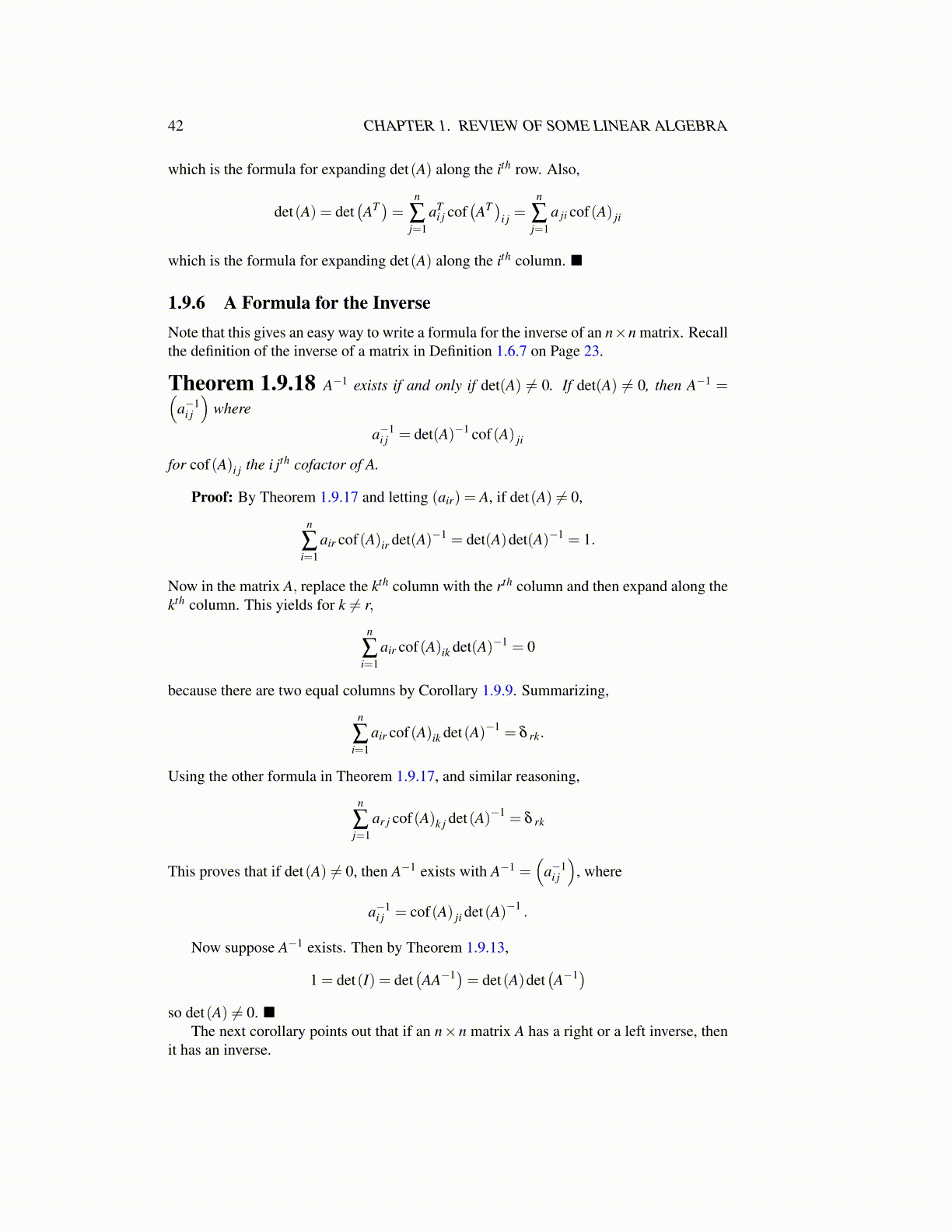
42 CHAPTER 1. REVIEW OF SOME LINEAR ALGEBRA
which is the formula for expanding det(A) along the ith row. Also,
det(A) = det(AT )= n
∑j=1
aTi j cof
(AT )
i j =n
∑j=1
a ji cof(A) ji
which is the formula for expanding det(A) along the ith column. ■
1.9.6 A Formula for the InverseNote that this gives an easy way to write a formula for the inverse of an n×n matrix. Recallthe definition of the inverse of a matrix in Definition 1.6.7 on Page 23.
Theorem 1.9.18 A−1 exists if and only if det(A) ̸= 0. If det(A) ̸= 0, then A−1 =(a−1
i j
)where
a−1i j = det(A)−1 cof(A) ji
for cof(A)i j the i jth cofactor of A.
Proof: By Theorem 1.9.17 and letting (air) = A, if det(A) ̸= 0,
n
∑i=1
air cof(A)ir det(A)−1 = det(A)det(A)−1 = 1.
Now in the matrix A, replace the kth column with the rth column and then expand along thekth column. This yields for k ̸= r,
n
∑i=1
air cof(A)ik det(A)−1 = 0
because there are two equal columns by Corollary 1.9.9. Summarizing,
n
∑i=1
air cof(A)ik det(A)−1 = δ rk.
Using the other formula in Theorem 1.9.17, and similar reasoning,
n
∑j=1
ar j cof(A)k j det(A)−1 = δ rk
This proves that if det(A) ̸= 0, then A−1 exists with A−1 =(
a−1i j
), where
a−1i j = cof(A) ji det(A)−1 .
Now suppose A−1 exists. Then by Theorem 1.9.13,
1 = det(I) = det(AA−1)= det(A)det
(A−1)
so det(A) ̸= 0. ■The next corollary points out that if an n×n matrix A has a right or a left inverse, then
it has an inverse.